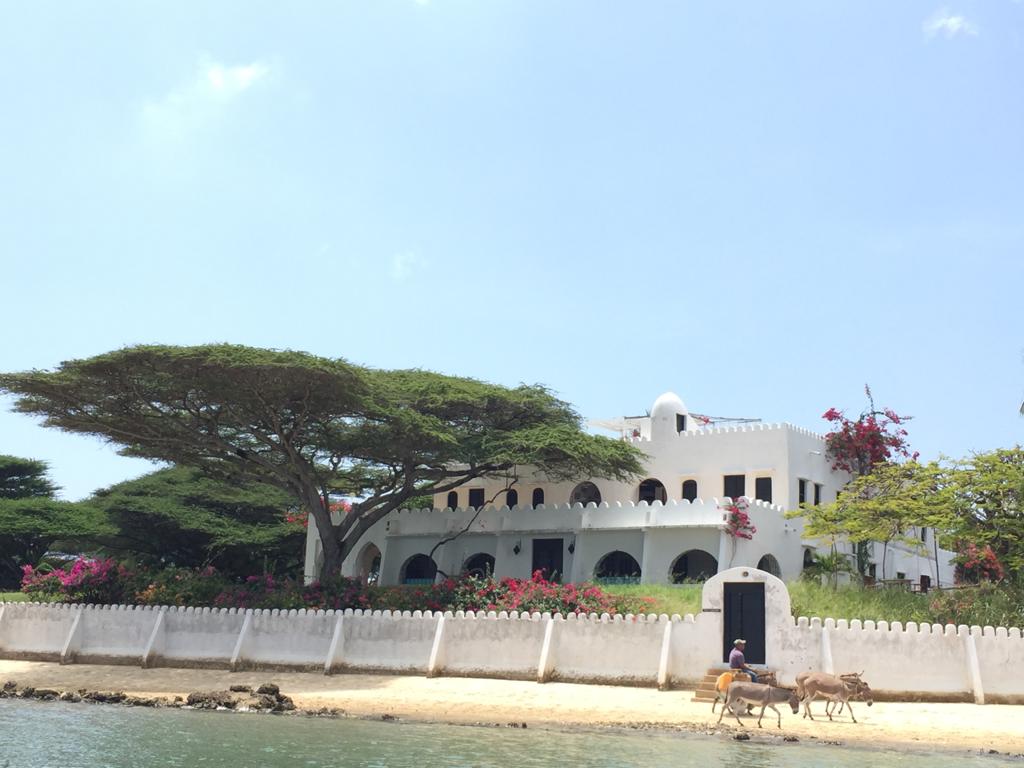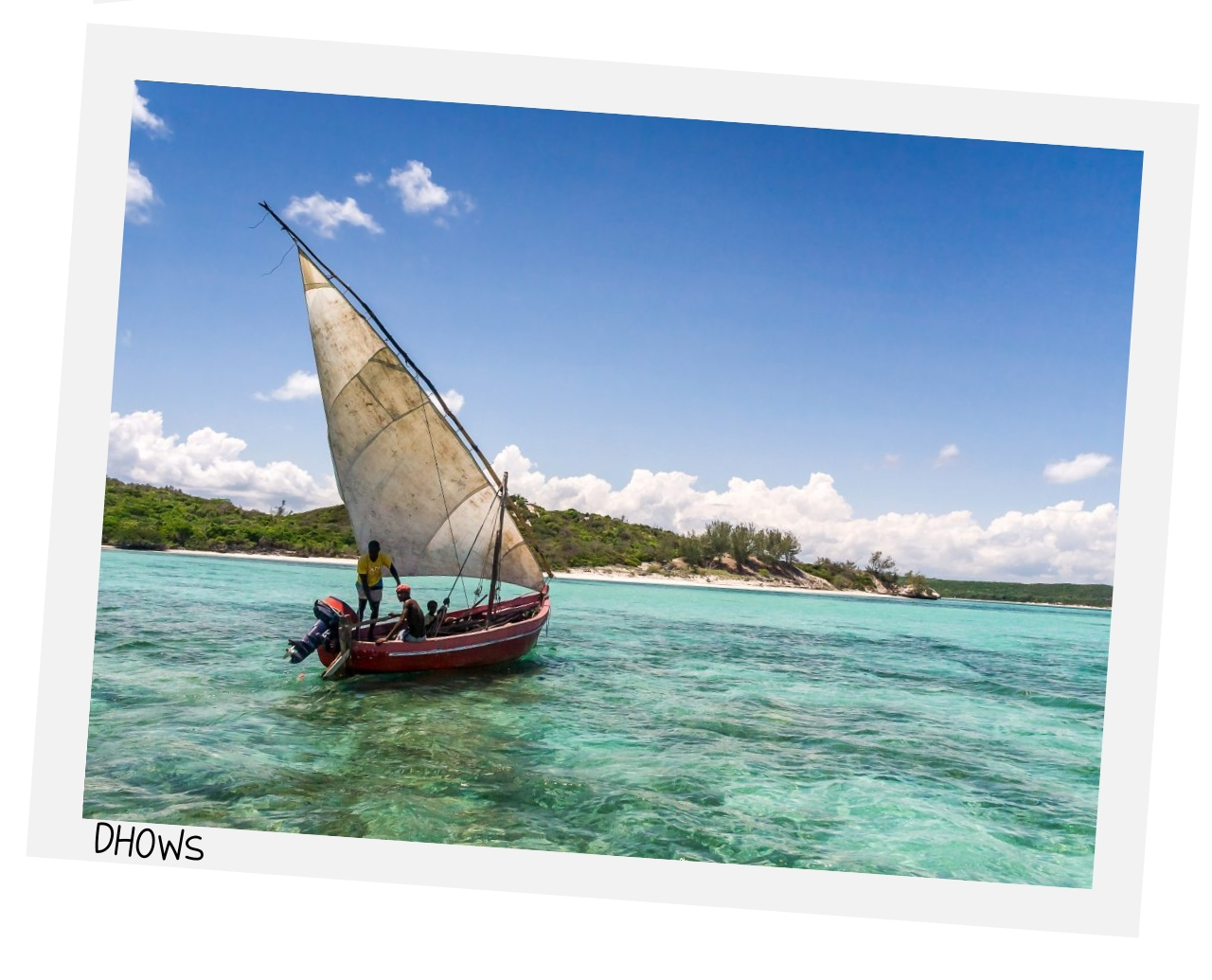
Share this Article

When you arrive in Lamu by plane and head out the airport, instead of the usual rack of taxis that usually awaits, you are greeted by a barrage of boat operators offering to take you to whichever island in the Lamu Archipelago you are staying. For co-owners Amal and Zane Wilemon, it is usually the Majlis on Manda Island.

For weekends away with friends, we are partial to Forodhani House on Shela Beach. The House is located on the exact spot where a watch-post once stood, guiding the boats into and out of Lamu Island. Still in Shela, heritage hotel Peponi is an absolute dream. Across the channel from the Majlis, right on Shela beach, it is tranquil and soothing during the day, and the perfect spot for dinner and drinks in the evening. When we feel like being in the heart of Lamu Town, Lamu House Hotel is our go-to. More so, because it is right next to the Saba Studios, a must-visit Lamu store. Whichever island you settle on, there is one constant, Lamu immediately captivates and enthralls.




The history, culture, and the slow pace of life are like a siren call that brings us back to Lamu again and again. Part of Lamu's charm is how it has resisted elements of modernization. If you thought getting collected from the airport by boat was unique to Manda Island, where the airport is based, think again. There are no cars in Lamu. Yup, you heard us, no cars! Because of the small winding roads, cars are banned for the general public. Instead, donkeys are the mode of transport on land and dhows to travel throughout the Lamu Archipelago.
Maai Mahiu in Kenya's Rift Valley is our home. Our US home base is Austin, Texas. And since our co-founders, Zane and Amal Wilemon, first traveled to Lamu, then took us along with them, the Lamu Archipelago located in the Indian Ocean on the northern coast of Kenya has captured our hearts. Lamu's rich history informs the blend of cultures and architectural styles throughout the Lamu Archipelago. Here's a quick snapshot of Lamu's history:

Founded in 1370, Lamu Old Town is one of the oldest continuously inhabited settlements. By resisting some elements of modernization like demolishing structures to make way for modern roads that can accommodate cars, much of this culture has been preserved. The Arab, Indian, Persian, and European influences in the local architecture speak to this history. Lamu's years as an Omani protectorate from the late 17th century to the early 19th century mark the town's golden age. Lamu was governed as a republic under a council of elders known as the Yumbe, who ruled from a palace in Lamu Town. Lamu became a center of poetry, politics, arts and crafts, and trade during this period. In the middle of the 19th century, Lamu came under the political influence of the sultan of Zanzibar. From November 22nd, 1888, to March 3rd, 1891, a German post office in Lamu facilitated communication within the German protectorate in the sultanate. It was the first post office to be established on the East African coast; today, it is a Museum. In 1890, Lamu came under British colonial rule, which it remained until Kenya gained political independence in 1963.

It's impossible to conclusively and comprehensively list all the places to visit in Lamu. Still, a great jump-off point for suggested places to see and that we 100% endorse are the 11 sites that Business Insider Africa says will "blow you away!"


Lamu Town Square
Also known as (Mkunguni) the square used to be a landing site for marine activities during the Swahili golden age.
Lamu Fort
The construction of Lamu Fort commenced in 1813, shortly after Lamu’s victory over Pate and Mombasa in the battle of Shela. The major building task was reputedly undertaken with the cooperation of Seyyid Said, the Sultan of Oman, who was then cultivating a promising new alliance with Lamu. Upon its completion in about 1821, Lamu Fort marked the Southern corner of the traditional stone town and served as a garrison for Baluchi soldiers sent by the Sultan of Oman. Its protective presence encouraged new development around it — merchants erected shop fronts and buildings. By 1900 Lamu Fort had become the epicenter of the community, a role which it still plays to date. Learn more about Lamu Fort here.
Lamu Museum
Located on the waterfront next to the town jetty, it is the second-largest building in Lamu Old Town after Lamu Fort. Abdalla bin Hamed bin Siad Al-Busaid originally owned the building, and its construction was completed in 1892.
The German Post Office
This double-story building was the first post office in East Africa, underscoring the fame of Lamu then as the center for maritime trade with Europe and other nations.
It was built after the reclamation of a strip of land from the sea in the early 19 century by Mrs. Mwana Madina.
It was later bought and renovated by a German Consul, Mr. Gustav Denhardt, an Architect and Geographer.
The house was transformed into a post office in 1888 and became a museum in 1996.
The Swahili House Museum
A walk through this unique museum gives one a glimpse of the traditional setup of a Swahili home, with its well-planned bedrooms, bath, kitchen, and living areas. Period furniture has been used throughout the rooms and gives this museum its authentic character. It is located in the northern part of the town.


The Swahili House Museum
A walk through this unique museum gives one a glimpse of the traditional setup of a Swahili home, with its well-planned bedrooms, bath, kitchen, and living areas. Period furniture has been used throughout the rooms and gives this museum its authentic character. It is located in the northern part of the town.
Shela Village
Located about two and a half kilometers south of Lamu Town, this peaceful fishing town is frequented by thousands of visitors annually to enjoy its 12km of golden sand flanked by sand dunes.
Matondoni Village
If you want to know more about the craft of Lamu’s world-famous traditional dhows and how they are made, then this is the place for you. Takwa Ruins (15. photos in the folder) Located at Manda Island, these ruins are all that remain of the thriving 16-century Swahili trading post.
Pate Island
According to the chronicle of Pate, the town was founded by Arab immigrants in the early years of Islam. In the 13 century, a dispossessed group of Arab rulers from Oman (the Nabhani) arrived in Pate Island. The main towns on Pate Island are Siyu, Faza, Kizungitini, and Mtangawanda; of these Siyu is best known for its tradition as a center of Islamic learning.
Shanga Ruins
This is the oldest known settlement on the Kenyan coast and Pate.
Kiunga Marine National Reserve
Stretching about 60km along the coastline with coral reefs and little islands, Kiunga Marine National Reserve lies in the confluence of the northern East African coast. It is renowned as a habitat for the rare Dugong, a marine fish with a tail like a mermaid (it is believed to be the source of the mermaid myth). It is also the most extensive breeding ground for the roseate terns and at least five types of turtle and nine types of mangrove species.
For the yoga lovers
We believe that any time is the best time to visit Lamu, but for the yogis, we recommend participating in the annual Lamu Yoga Festival. It takes place over five days with over 25 teachers, 150 yoga classes, meditations, and workshops in Shela, Lamu Town, and Manda Island. There's still time to book your spot at the next Lamu Yoga Festival (November 17th, 2021 – November 21st, 2021), COVID-safety permitting.



All our lives are made better with a bit of Lamu in them. Our homes are punctuated with treasures from the islands. These are our favorite Lamu-based brands to visit and shop online:
Small, carefully considered collections. Handloom block print cotton and printed silk inspired by African textiles and tailored on the islands
Bags and artwork made from old dhow sails
A slow fashion brand dedicated to elegant simplicity, sustainability, and compassion for people and our planet
A collection of authentic hand-made treasures from the islands
Furniture and accessories inspired by the rich history of Swahili crafts and design in Lamu. Saba Studios collaborate with Swahili carpenters to produce Swahili inspired contemporary designs.
Jewelry made from antique porcelain washed up on Lamu's shores

